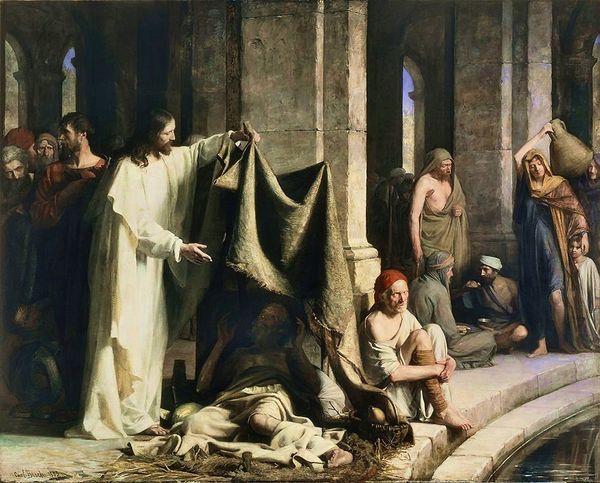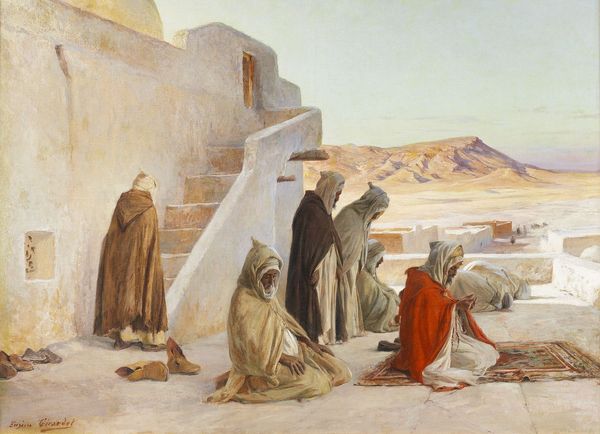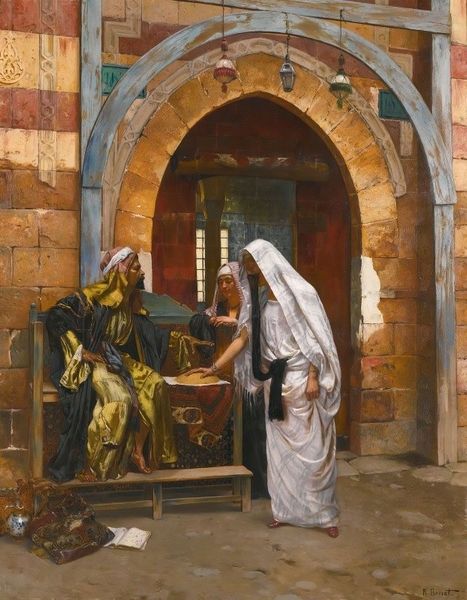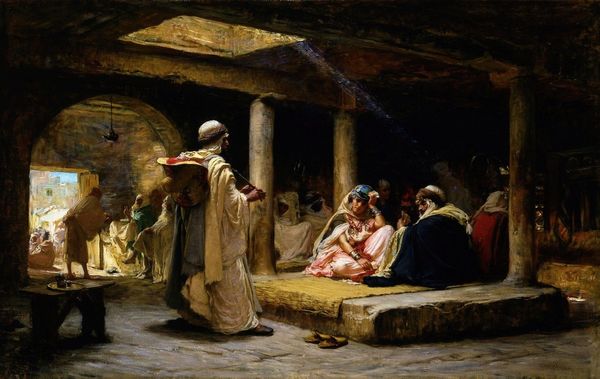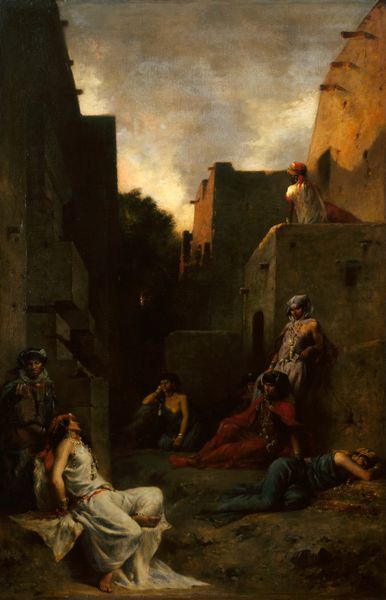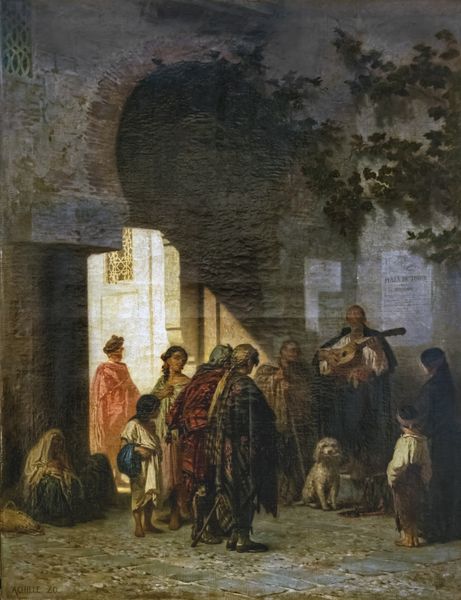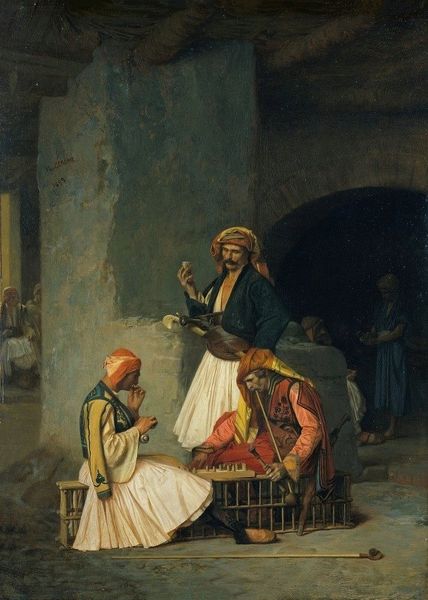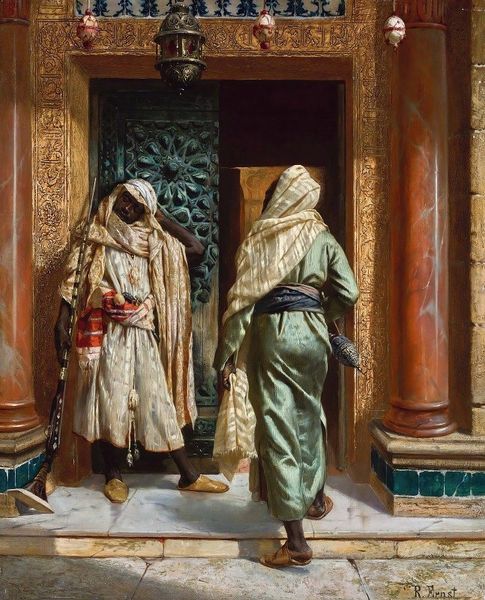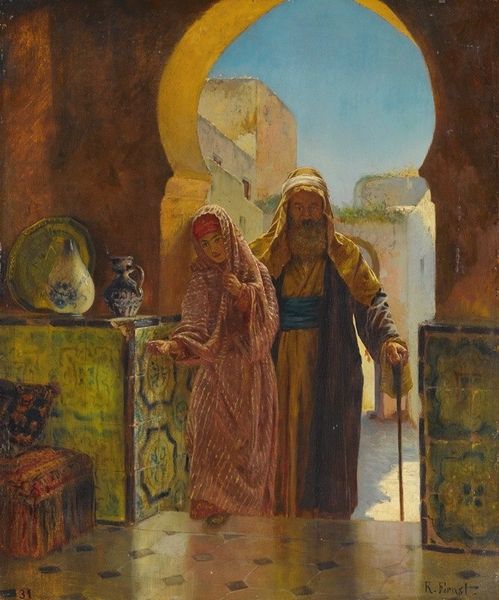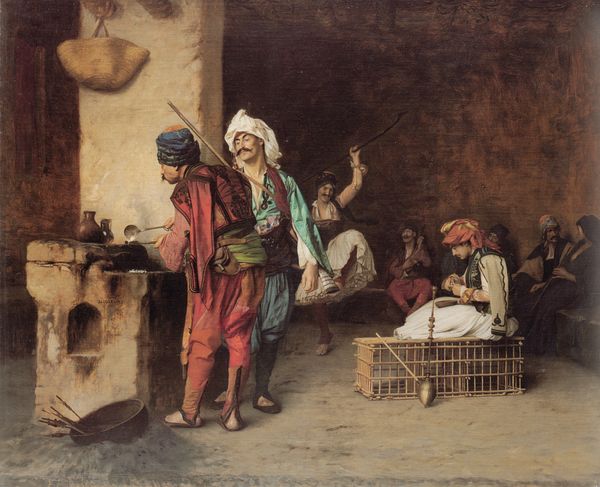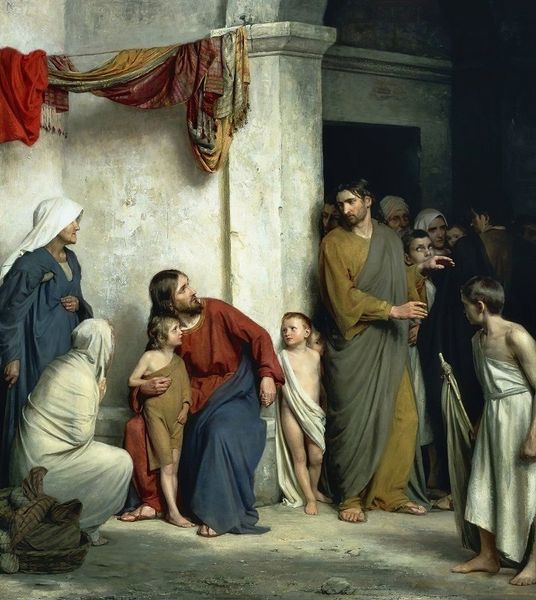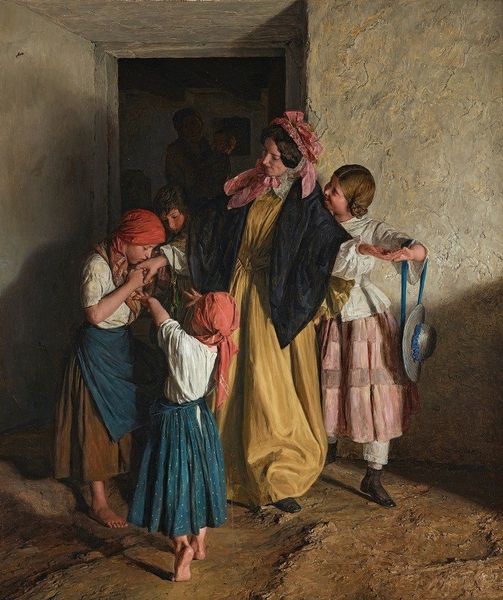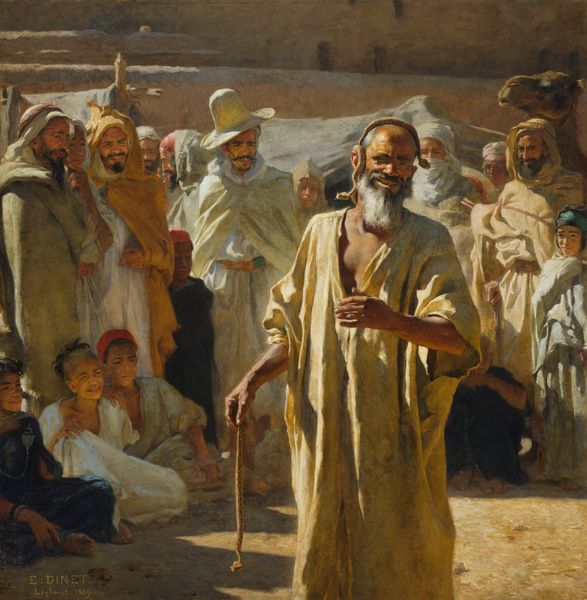
oil-paint
#
figurative
#
oil-paint
#
landscape
#
figuration
#
oil painting
#
classicism
#
orientalism
#
genre-painting
#
history-painting
#
academic-art
Copyright: Public Domain: Artvee
Curator: Standing before us is "Old Jew with three Arabs," an oil painting attributable to Jean-Léon Gérôme. It’s undated, leaving some intrigue around its creation within his broader Orientalist work. Editor: My first impression is one of subdued tension. The architecture is imposing, almost creating a stage for the interaction between these figures, and the earthy tones add a sort of solemn gravity to the scene. Curator: Precisely, that gravity connects to the established traditions within Orientalism. Gérôme, like many of his contemporaries, capitalized on the European fascination with the "exotic" Near East, depicting scenes that often reinforced existing power dynamics and stereotypes. Editor: And we can't ignore how that fascination translates into the portrayal of these figures. The title itself, "Old Jew with three Arabs," immediately frames a potentially unequal dynamic. I see a representation that is both exoticizing and imbued with an implied sense of the other. The way the Arab figures are armed, and the posture of the Jewish man seemingly imploring them raises questions. Who is telling their history, what context might inform our understanding of their interaction? Curator: Gérôme’s academic style certainly aimed for ethnographic accuracy in costume and setting, striving to transport viewers to a distant reality. The painting entered the art market and collections influenced and influencing perception. What was considered beautiful in the European eye shaped the imagery and its narrative power. Editor: That's a critical point—"accuracy" served a particular, very specific agenda. His style also flattens any nuance into types: The Old Jew becomes the archetype of the bargaining Semite, while the armed Arabs risk becoming simple symbols of potential menace. Are there narratives and histories these figures could suggest outside this paradigm? Curator: Absolutely, one must interrogate his choices when he’s selecting scenes and his deployment of meticulous detail. This work invites not just visual appreciation but deep ethical consideration of cultural representation and historical context. The piece made for public display reinforces what can and cannot be seen. Editor: By unsettling those easy stereotypes, questioning his depiction of power relations and social others, perhaps Gérôme inadvertently gives us something useful today: a picture through which we recognize our inherited assumptions, while pushing our social imaginations. Curator: Indeed. Engaging with artworks like this forces us to confront the complex role art has played, and continues to play, in shaping our perceptions and understandings. Editor: It prompts us to reconsider not only art history but also who gets to shape our collective visual history and what responsibilities we hold in questioning that history.
Comments
No comments
Be the first to comment and join the conversation on the ultimate creative platform.
